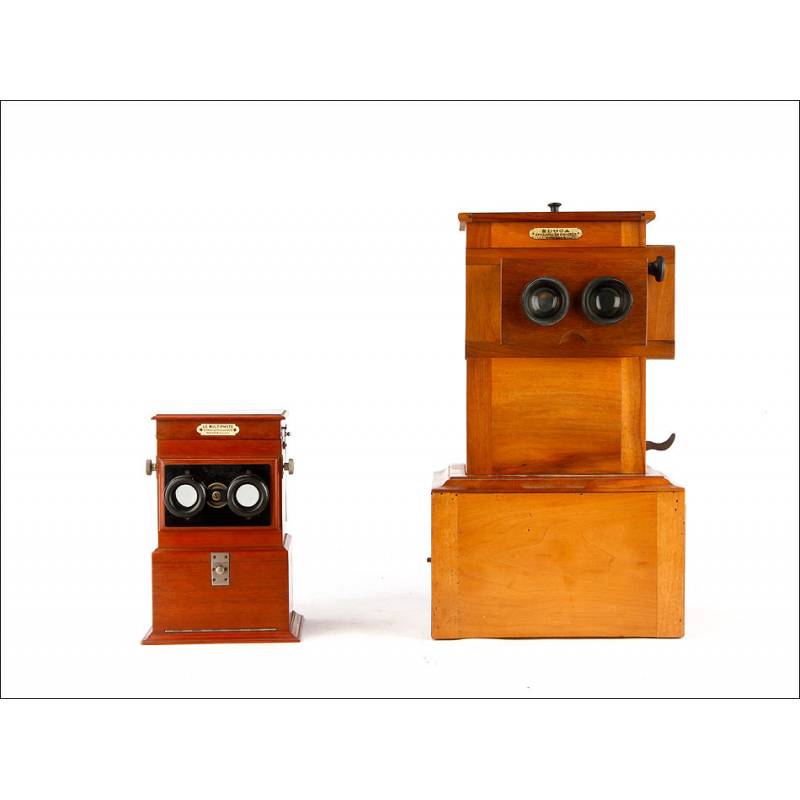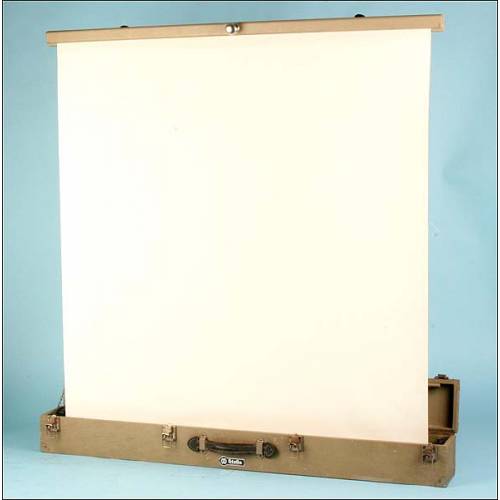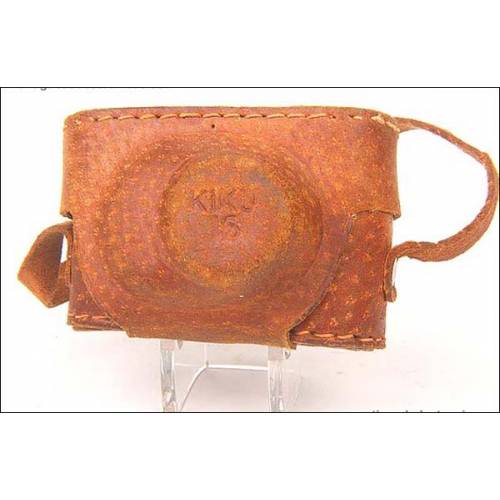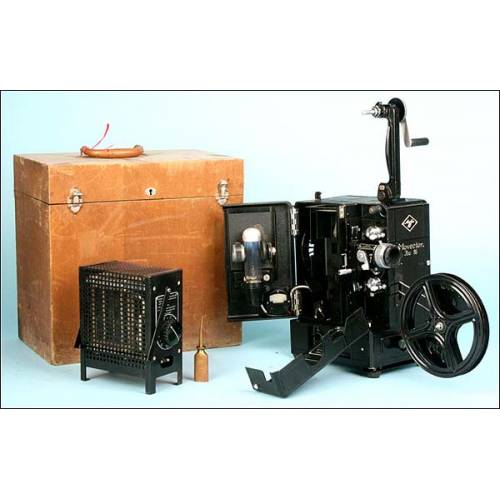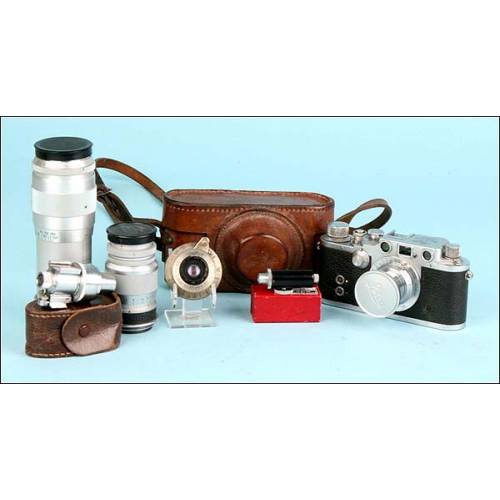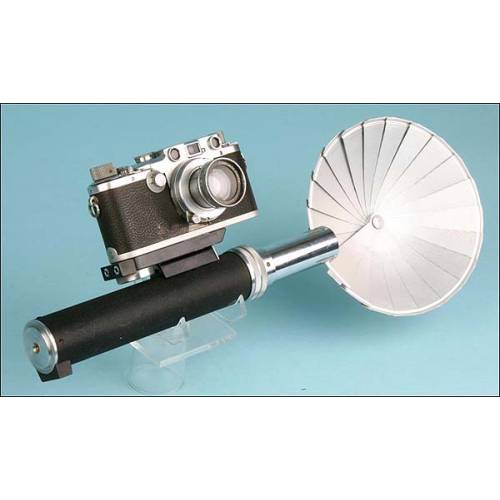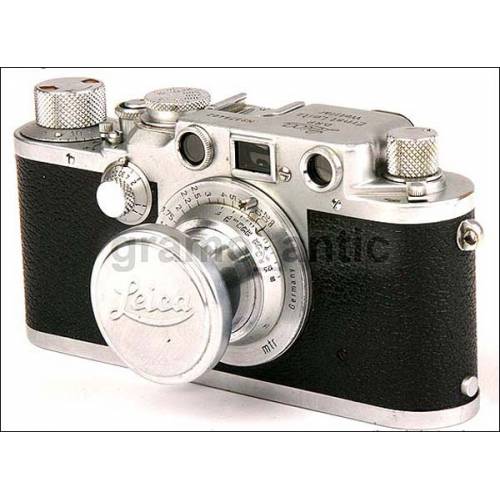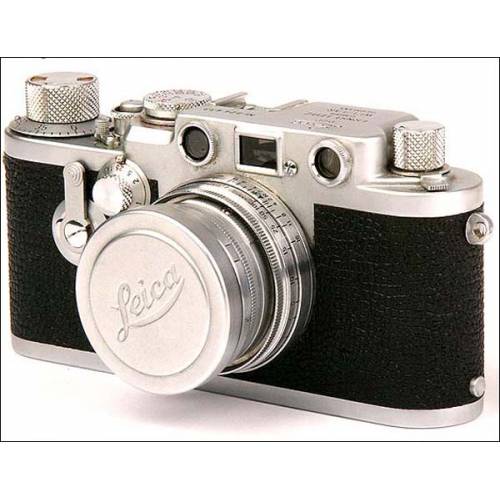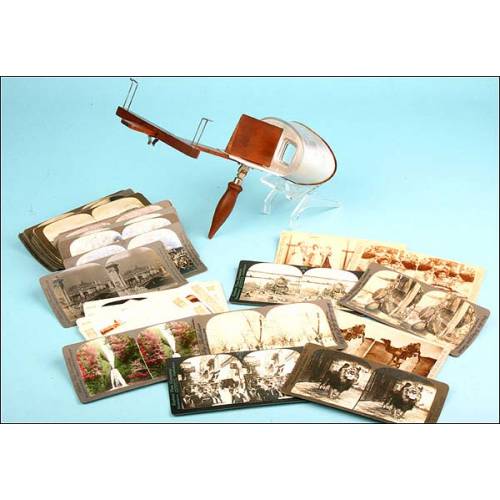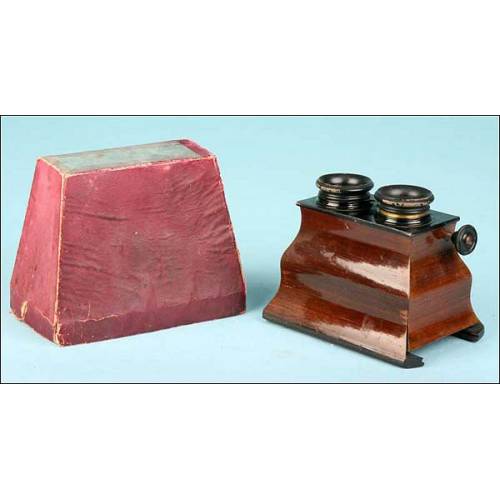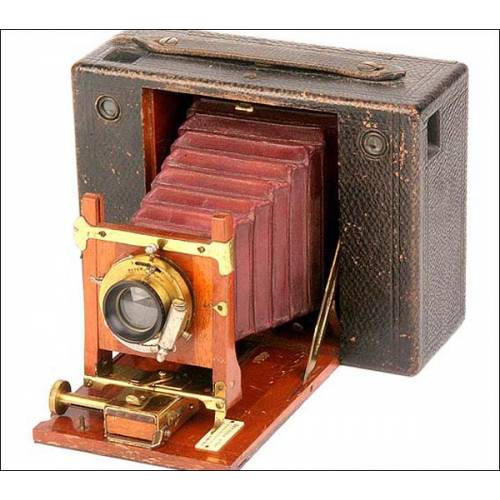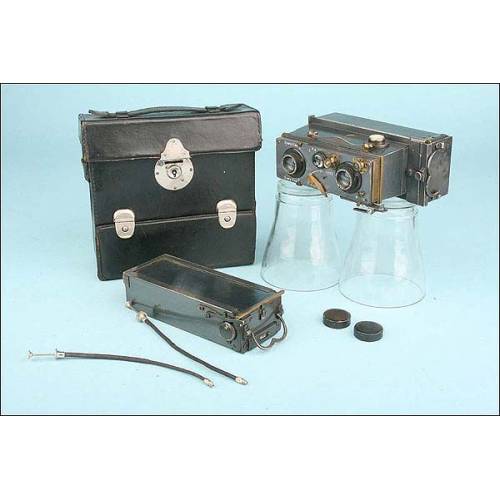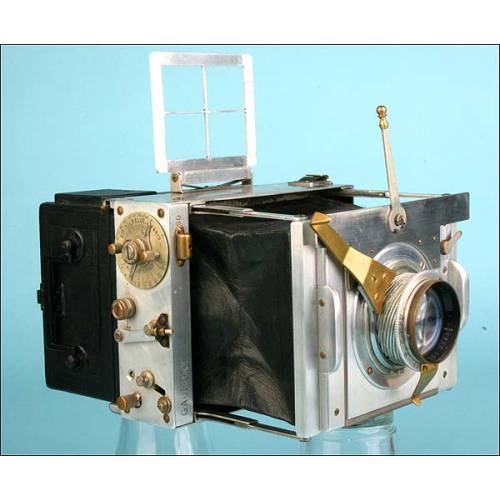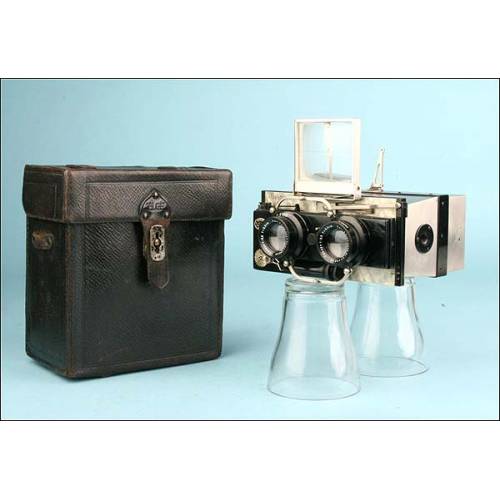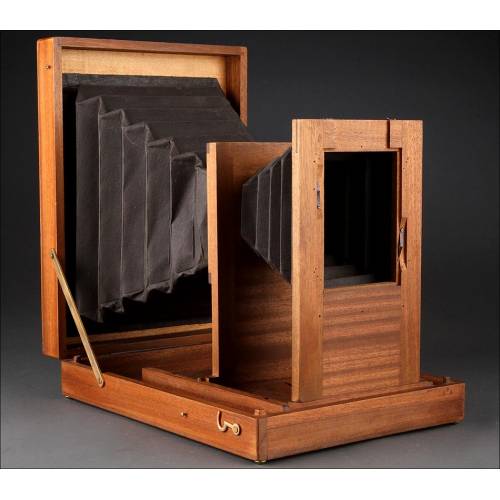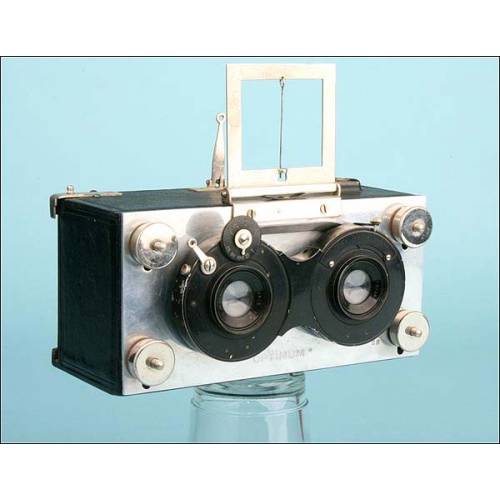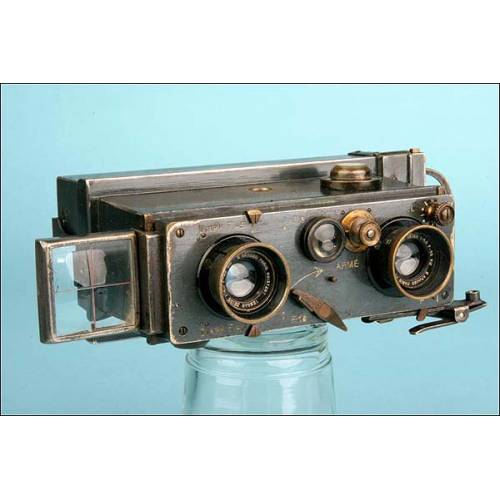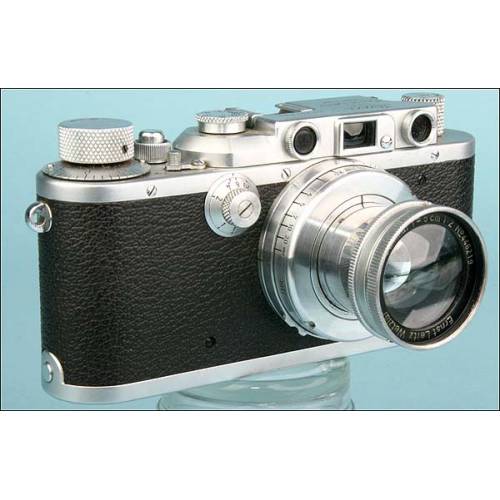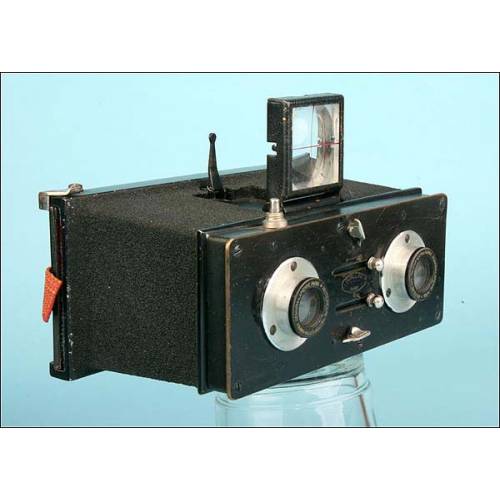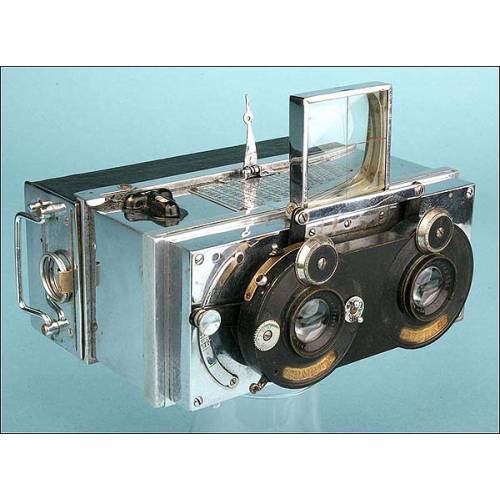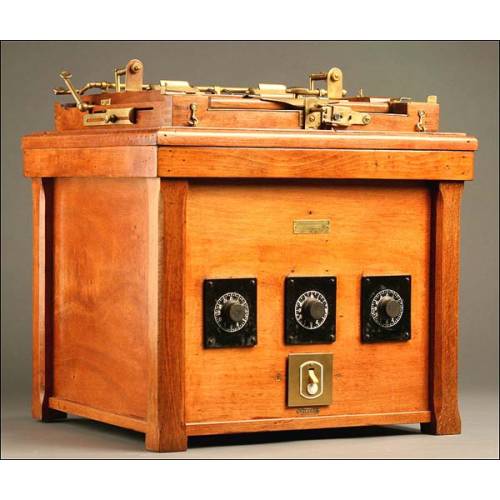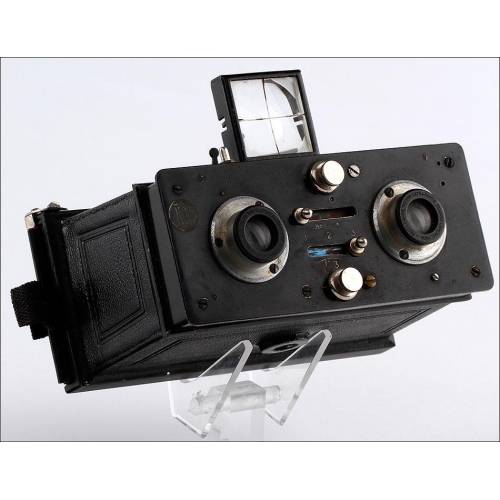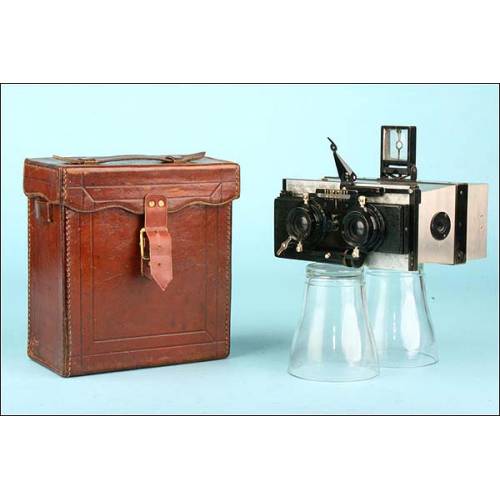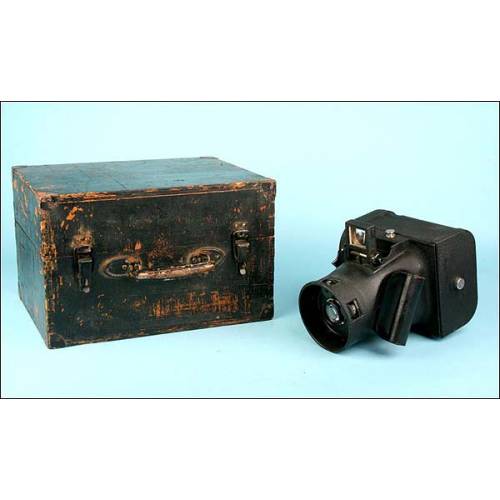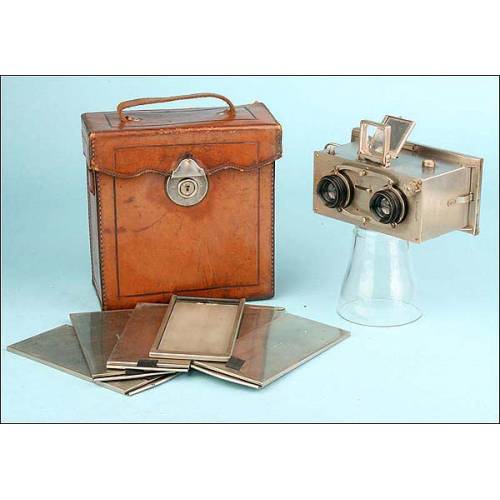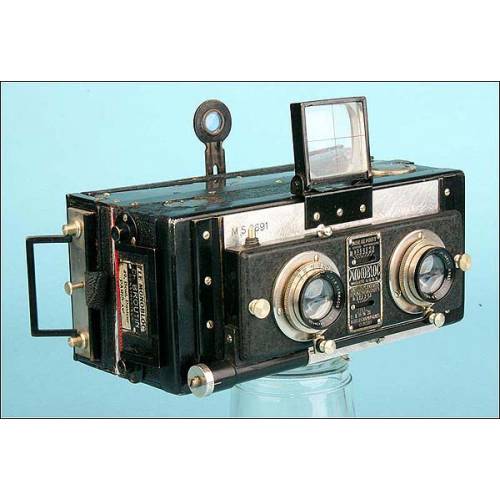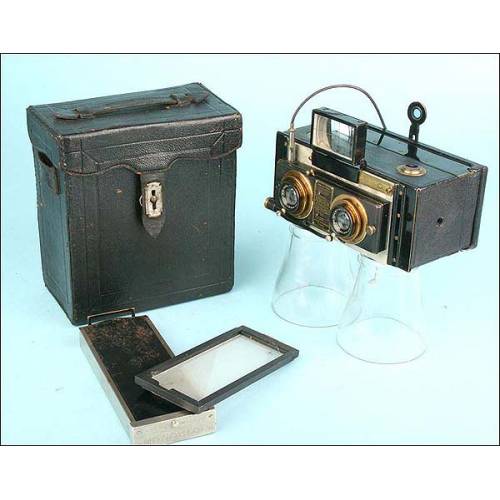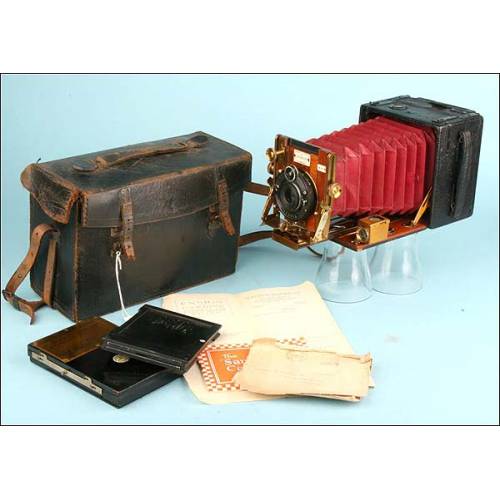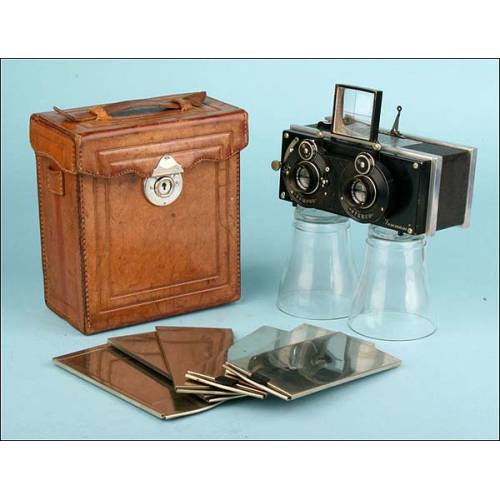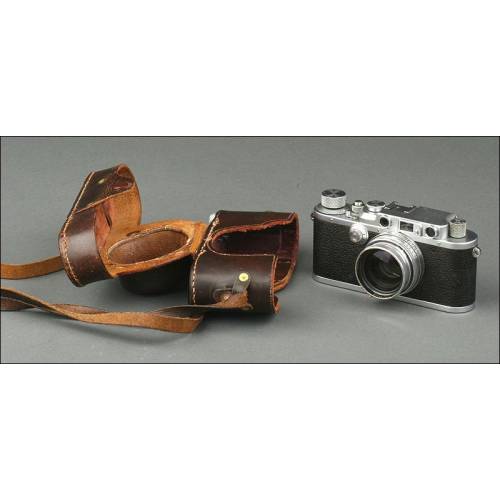B-930
Antique automatic stereoscope 'Le Multiphote'.
Rare antique Le Multiphote automatic stereoscope in very good condition. Working.
Sold!
Rare automatic Le Multiphote stereoscope in amazing condition and perfect working order. This beautiful device is the smallest model among all automatic stereoscopes. It was made in France circa 1910 and has been fully restored in order to show off the gorgeous look that we can appreciate in the images. The stereoscope preserves all its original component parts and works fine, being a full pleasure for the user to operate it. The casing is made of mahogany wood, in really good condition and with the lovely reddish color that characterizes this noble material. The stereoscope mounts a curious system that helps the user to visualize the plates. The bottom tray with the organized plates must be removed and put into the top compartment. Then, the user has to gradually remove the trays bottom so the plates can fall in front of the eyepieces lenses. Once seen, the plates will fall again into the bottom tray so the cycle can start again. This system works perfectly and makes it possible to watch the plates comfortably, keeping them well organized. The stereoscope mounts black bakelite eyepieces and well-preserved original lenses. At its front side, over the eyepieces we can see a bone-colored plate with the models name: LE MULTIPHOTE STEREO-AUTO-CLASSEUR. The item comes with 24 original photographic plates. As beautiful as original, this antique automatic stereoscope is a real treasure from the early 20th century. Measurements: Width: 6.49 in /16.5 cm. Height: 9.25 in /23.5 cm.History of Stereoscopy Stereoscopy is known since centuries ago, but it was only in the early 19th century when Sir Charles Wheatstone manufactured the first viewer. Nevertheless, in the 16th century some devices were made that let people watch images with a certain depth. In 1834 James Elliot had the idea of constructing an apparatus that was to allow the viewing of two dissimilar pictures simultaneously that were to create the impression of an elevated object. Nevertheless, he did not implement this construction until three years after the production of the first stereoscope, created by Wheatstone in 1838. During the 19th century many stereoscopic viewers (also called stereoscopes) were manufactured, and during the first half of the 20th century they became very popular instruments. In fact, they were commonly used until the 1970s.

